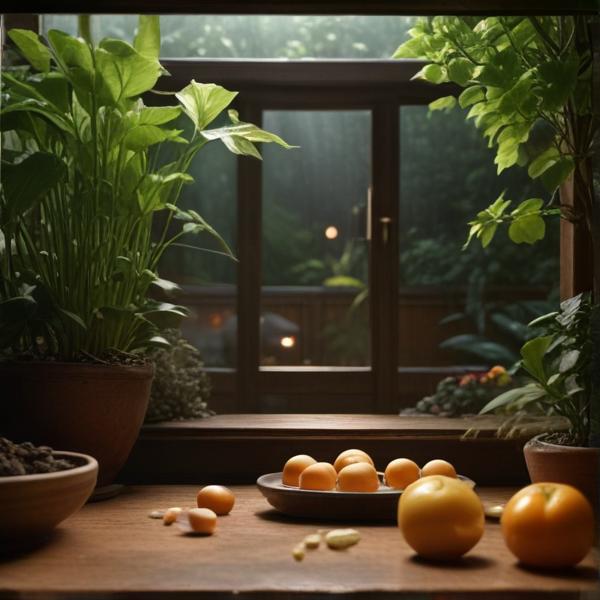基本信息 (Basic Information)
含义与用法 (Meanings & Usage)
中文核心释义 (Core Chinese Meaning): 蔬菜,做熟的菜肴
英文核心释义 (Core English Meaning): vegetable; (cooked) dish
象形意义 / 为何这么写 (Pictographic Meaning / Writing Rationale)
文言文释义 (Classical Chinese Meaning)
与现代意义相近,主要指植物性食物、蔬菜,有时泛指野草。Similar to modern meaning, mainly refers to edible plants or vegetables, sometimes also wild herbs.
深入学习 (In-depth Study)
字源故事 (Origin Story)
字形演变 (Character Evolution)
常用词语和例句 (Common Words & Examples)
蔬菜 (vegetables)
每天多吃蔬菜对身体健康有好处。
Eng: Eating more vegetables every day is good for your health.
点菜 (to order dishes (in a restaurant))
请问您现在可以点菜了吗?
Eng: May I ask if you are ready to order now?
家常菜 (home-style dishes)
我最喜欢妈妈做的家常菜。
Eng: I like my mom's home-style dishes the most.
相关成语 (Related Idioms)
相关成语信息待补充。Related idiom information pending.
多语言翻译 (核心释义) (Translations (Core Meaning))
- French: légume; plat (cuisiné)
- German: Gemüse; Gericht (zubereitet)
- Spanish: verdura; plato (cocinado)
- Italian: verdura; piatto (cotto)
- Portuguese: vegetal; prato (cozido)
- Russian: овощ; блюдо (приготовленное)
- Arabic: خضار؛ طبق (مطبوخ)
- Persian: سبزی؛ غذا (پخته شده)
- Dutch: groente; (bereid) gerecht
- Polish: warzywo; potrawa (gotowana)
- Vietnamese: rau; món ăn (đã nấu chín)
- Ukrainian: овоч; страва (приготована)
视频学习资源 (Video Learning Resources)
通过以下链接在热门视频网站搜索 "菜" 的更多讲解:
Search for more explanations of "菜" on popular video sites:
- 在 Bilibili.com 搜索 "菜 字源 说文解字" (Search on Bilibili)
- 在 YouTube.com 搜索 "菜 character origin etymology" (Search on YouTube)
网络参考 (Web References for "菜") ()
网络内容摘要 (Web Content Summary):
“菜”字是一个形声兼会意字,最早见于《说文解字》的小篆中。上部“艹”像草,表示与植物有关,下部“采”表示采摘,整体本意即“采集的草”,常指可食用的蔬菜。 The character “菜” (cài) is a combined pictophonetic and associative compound. Its earliest forms appeared in ancient scripts like the Small Seal Script from “Shuowen Jiezi.” The top part “艹” (grass radical) relates to plants, while the bottom part “采” means “to pick.” The original meaning refers to “plants that are picked”—commonly edible vegetables.
-
文化背景:“菜”在中国饮食文化中非常重要,不仅指蔬菜,也泛指各种菜肴,如“家常菜”。 Cultural background: “菜” is crucial in Chinese cuisine. Besides vegetables, it can refer more broadly to dishes or cuisines, e.g., “家常菜” (home-style dishes).
-
常见词汇与用法:常见词有“青菜”(green vegetables)、“菜市场”(vegetable market)、“炒菜”(stir-fried dish)。 Common words & uses: Frequently seen in words like “青菜” (greens), “菜市场” (market), and “炒菜” (to stir-fry dishes).
-
易混淆点:“菜”有时特指蔬菜,有时泛指所有菜肴,要根据语境区分。 Common confusion: “菜” sometimes specifically means “vegetables,” but can also refer to all types of dishes, depending on context.
信息有限,未找到与“菜”相关的成语专门提及。 No idioms directly related to “菜” were found in the provided material.
菜(汉语汉字)_百度百科
"菜"字是形声字兼会意字。此字始见于《说文》中的小篆文字中(图1),"菜"字的上部分像两棵草的形状,下部分与"采"字相似。到了汉朝文字中,"菜"字的上部分像是两座山,下部分为"木"。到了楷书中,"菜"字就和现代文字几乎相同,只有上 ...
【菜】的甲骨文金文篆文字形演变含义 - 甲骨文研究网 甲骨文密码字典 在线甲骨文字典研究 - 甲骨文研究网 甲骨文密码字典 在线甲骨文字典研究 认路
汉字的来历和演变(說文解字 篆體字)(六書通 篆體字) (金文)甲骨文密码【甲骨密码】【其他解读】采,表示采摘。 ... 菜,金文=(采,摘)+(艸 . rss. ... 汉字甲骨文破译字典》一书中,破解的古诗、竹简等古文作品收录在《新编甲骨文破译案例解析 ...
更多图片 (菜 More Images) ()
